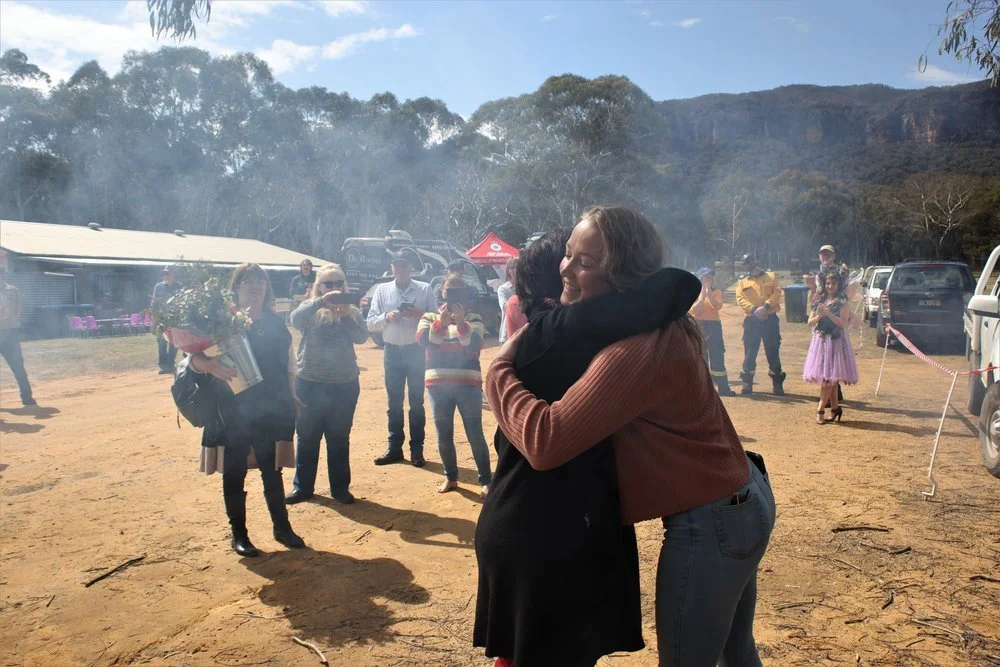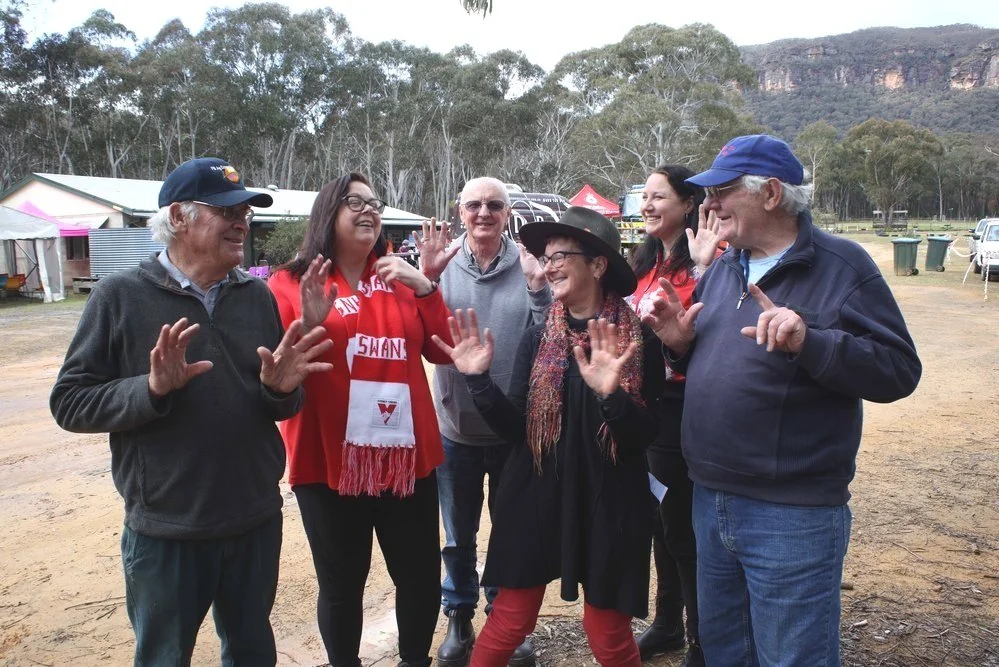Megalong Valley residents come together to celebrate community and strengthen resilience
With the stunning backdrop of the Megalong Valley Escarpment behind them, residents of the Megalong Valley recently came together to experience their first ever Community Expo.
The theme of the day was ‘strengthening community resilience, connection & wellbeing,’ and the event attracted groups from throughout the Megalong Valley - some of whom had never met before - as well as from the neighbouring communities of the Kanimbla Valley, Shipley, Bell, Dargan, Clarence and Blackheath while others travelled from other parts of the Blue Mountains and Sydney to attend.
The event included a free community lunch, a drumming workshop, food and drink stalls, as well as presentations on first aid, cultural burning, managing feral pests and bush permaculture which all brought together around 20 community groups and organisations.
The Expo also featured a kids and adults photo competition which showcased what is so special and unique about the Megalong Valley.
Image: Claudia Abbott, Vice President of the Megalong Valley Community and Landowners Association hugs Pru Jobling shortly after a smoking ceremony was conducted at the Megalong Valley Community Expo.
One of the event organisers, Pru Jobling, who has been a resident of the Megalong Valley for 28 years said of living in the Valley; "I love the people, the mix of rural and bush, and the vast sense of sky and space… Everyone says there's no bad view in the Megalong Valley. Everywhere you go is beautiful for very different reasons. We're very blessed and lucky to be able to live here."
This is the first time that the Megalong Valley community has been able to get together in two years as a result of the combined effects of the 2019/2020 bushfires, COVID lock downs, a mouse plague and consecutive flooding events - the last of which destroyed much of the only road in and out of the Valley.
Rod Hill, another event organiser who has owned a property owner in the Valley for 40 years said “today’s Expo has really been about how [the community has] coped with the past two years.”
Paul Glass, a Kamilaroi man who grew up in the Mountains and conducted a smoking ceremony at the start of the day said “for me being in the Mountains, resilience is all about community connections and working together to help each other out... I believe that if we can stay together we can get through these floods, and fires and whatever is to come.”
Simon Anderson, an architect who has lived in the Megalong Valley for 7 years in an off grid, bushfire resistant house that he designed himself, said “for me resilience is all about being self-sufficient and living within your means... I think interestingly that it’s in the times of stress that the community really comes together and sometimes those things have to happen for you to realise that you can rely on your neighbours and friends to help you through”.
Finally, Pru reflected that “resilience to me means being able to bounce back, it means having a sense of optimism and trying to know that things will turn out ok in the end”.
Members of the ABCD group which represents residents from the communities of Bell, Clarence and Dargan also attended the event and shared their experiences of recovery and resilience after the 2019/2020 bushfires devastated their region.
Image: Members of the ABCD Inc group (Association of Clarence, Dargan and Bell) meet with Megalong Valley community organisers.
The event was organised by the working committee of the Megalong Valley Community & Landowners Association which consisted of Pru Jobling, Rod Hill and Malcolm Scott. The committee was also supported by the tireless work and insight of Karen Bartle, a Disaster Recovery Community Development Worker from Gateway Family Services which is funded by the Nepean Blue Mountains Primary Health Network to support communities who have been impacted by disasters such as bushfires and floods.
The Expo came about after a community consultation was held over an evening meal at the Megalong Valley Community Hall. Residents attending the consultation voted on what they were most interested in – the expo was a “taste test”, which they could then use to decide on future workshops or community events.
Karen Bartle said of the event, “The success of the Megalong Valley Community Expo is largely attributed to community led recovery principles. Consulting and listening to the community, who are the experts on their needs and wants is an important factor in recovery. It assists in building social capital and resilience. A community’s response to disaster is enhanced by its connection and cohesiveness which aids in the recovery process. It was great watching the community come together for this occasion and hearing the plans they have for future events.“



